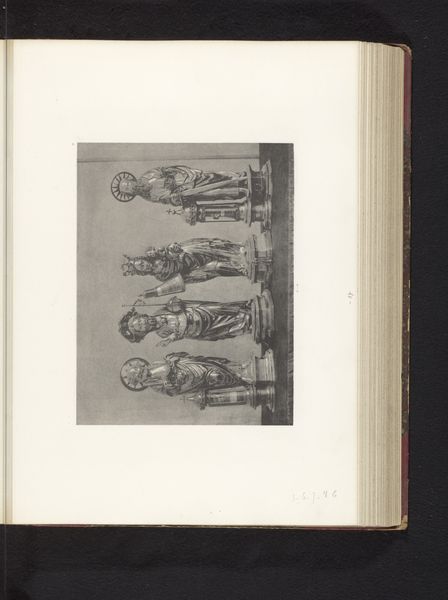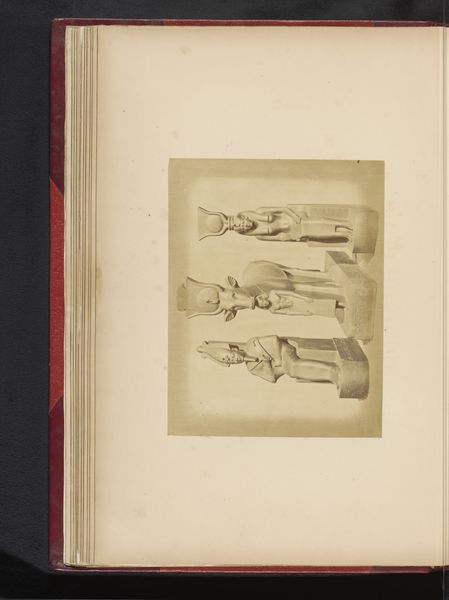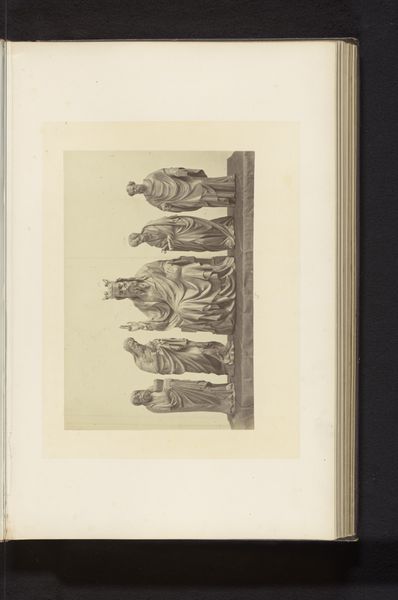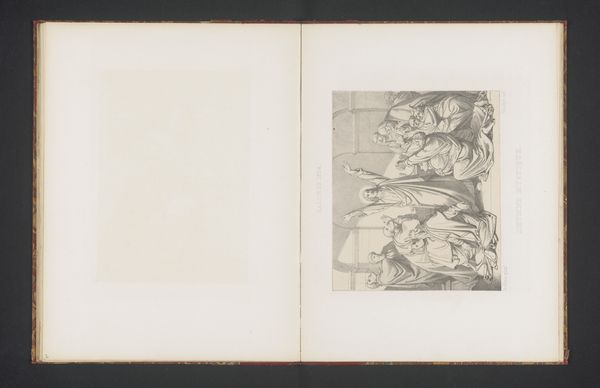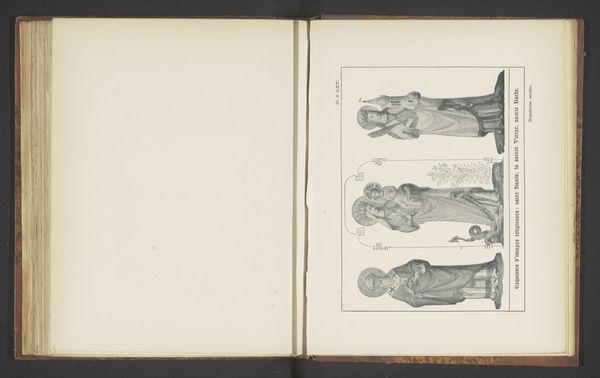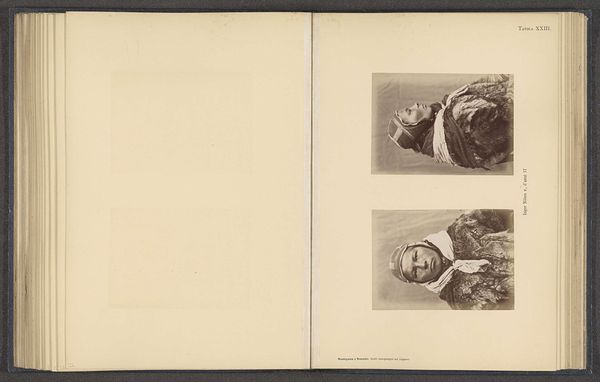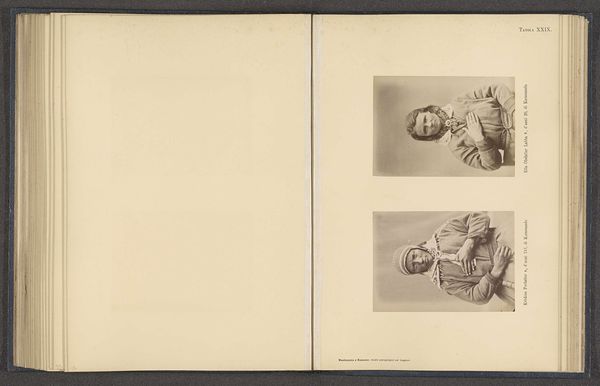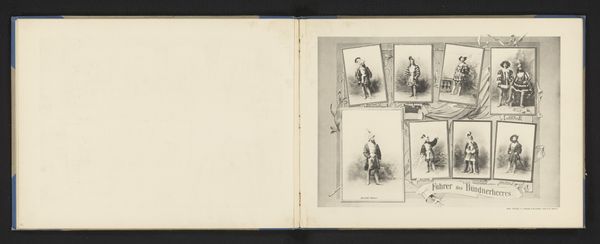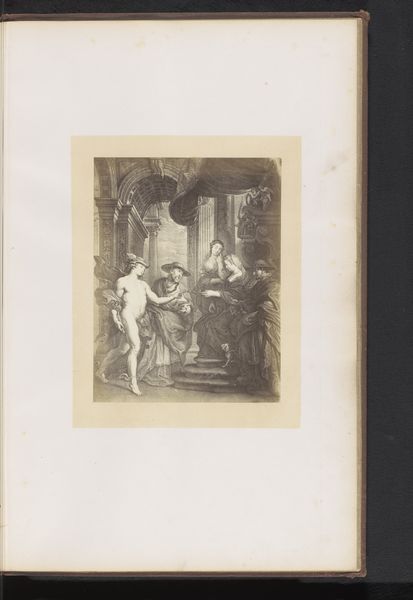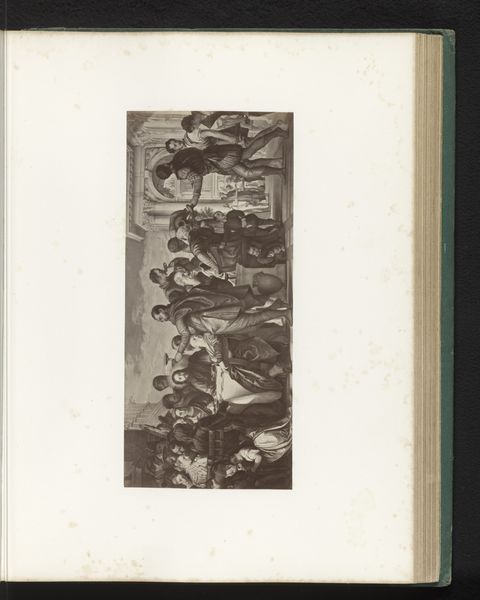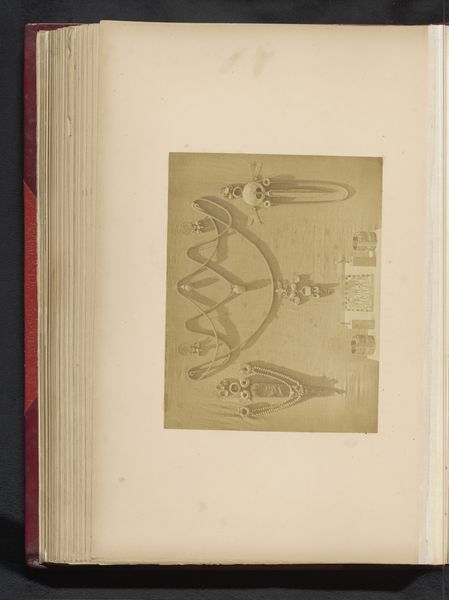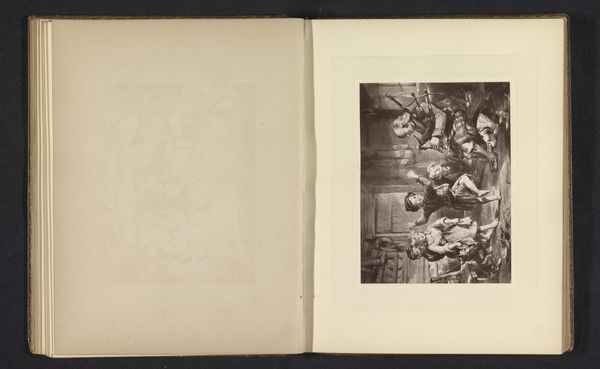
Vier relikwieënkasten in de vorm van sculpturen uit de Onze-Lieve-Vrouwebasiliek in Tongeren, opgesteld op een tentoonstelling over religieuze objecten uit de middeleeuwen en renaissance in 1864 in Mechelen 1864
0:00
0:00
print, photography, sculpture
#
portrait
#
medieval
# print
#
figuration
#
photography
#
sculpture
Dimensions: height 183 mm, width 230 mm
Copyright: Rijks Museum: Open Domain
Curator: This fascinating photograph by Joseph Maes documents an exhibition in Mechelen in 1864. It showcases four reliquary chests, each sculpted in the likeness of religious figures, which were originally housed in the Onze-Lieve-Vrouwebasiliek in Tongeren. Editor: They look remarkably severe, don’t they? The almost monotone sepia tone of the print intensifies the solemn expressions on each figure. And the tight cropping amplifies the architectural forms of the sculpted bases and the vertical rhythm between them. Curator: Indeed. Consider the context: this was a period deeply invested in historic preservation and religious revivalism in Belgium. Exhibitions like these served to display the nation's heritage and reinforce religious sentiment. Editor: It's interesting to note the photographic process here. The image is itself a form of preservation, documenting an event and objects. The act of photographing inherently shifts our relationship to the medieval artifacts. Curator: Precisely! We are not encountering the sculptures in their original devotional context within the basilica. The act of photography here frames, distances and classifies the holy. It presents an inventory of sacred forms removed from ritualistic meaning. Note, too, how the light falls— uniformly exposing the figures, creating stark contrast in an overall flattened picture plane. Editor: And what of the gaze? Who are these figures and what societal structures allowed for these particular archetypes to come to the fore? Are there clear signifiers that dictate rank and religious role, like specific gestures or symbolic objects? What of the largely untold histories surrounding class, gender, and race during this period? Curator: That's an important point. While the photo flattens their context, the details within the sculptures reveal social codes. These pieces are visual echoes of the medieval period in a 19th-century frame, begging us to delve into understanding each unique contribution from then until now. Editor: A striking image; one that demonstrates the enduring power of religious iconography. Curator: Yes, and one that reminds us how the simple act of documentation transforms history and reshapes meaning.
Comments
No comments
Be the first to comment and join the conversation on the ultimate creative platform.
